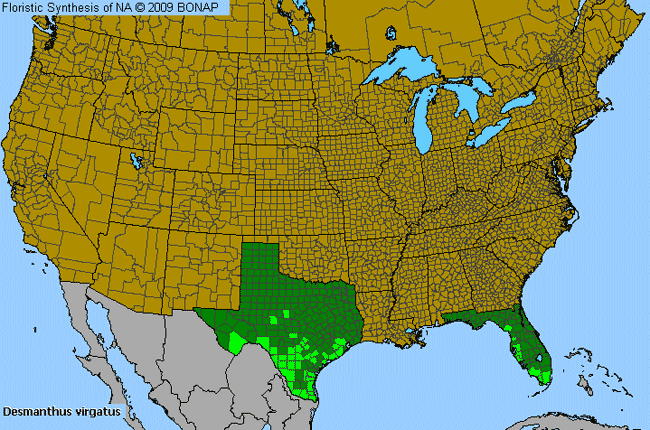Wild Tantan (Desmanthus virgatus)

Family:
FABACEAE
Genus: Desmanthus
Species: Wild Tantan (Desmanthus virgatus)
Alternative Names: Desmanthus virgatum
Genus: Desmanthus
Species: Wild Tantan (Desmanthus virgatus)
Alternative Names: Desmanthus virgatum
Wild Tantan Species Description

This species is native to North America north of Mexico.
Allergenicity: No allergy has been reported for Wild Tantan (Desmanthus virgatus) species.
Pollination: Occurs in following seasons depending on latitude and elevation: all year long.
Angiosperm - Flowering Dicot: Plants in this group have two embryonic leaves (dicotyledons). Examples of dicotyledons are beans, buttercups, oaks, sunflowers, etc.
Shrub: A woody plant smaller than a tree, and usually with several stems from the same root.
Forb: A broad-leaved herb other than a grass, especially one growing in a field, prairie, or meadow.
Weed: Any plant growing in cultivated ground to the injury of the crop or desired vegetation, or to the disfigurement of the place; an unsightly, useless, or injurious plant.
Perennial: Living for many years.
Wetland Plant: Plants growing in aquatic or wetland habitats. These include all known floating, submerged, and emergent taxa, plus those that are found in permanently or seasonally wet habitats.
Woody Stem: Non-herbaceous. Lignified.
Herbaceous Stem: Not woody, lacking lignified tissues.
Wild Tantan Species Usage

Pharmacological: Used in medicine or pharmacological research.
Related Links

More Wild Tantan (Desmanthus virgatus) imagesby Jessie M. Harris from BONAP










